COCA-COLA BOTTLING Co. * Petula Clark * (Coca-Cola Merchandising Ad; 1965)
![]()
https://www.youtube.com/watch?v=DTR48CpilOY
https://www.youtube.com/watch?v=PGXRqzQJFzQ
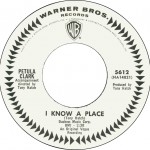 Following her No. 1 U. S. hit, “Downtown” in 1964, Petula Clark came back with her second top 10 smash, “I Know A Place,” having peaked No. 3 on Billboard, May 1, 1965. “I Know A Place” made top 10 CKLW, WXYZ, and WKNR Detroit. After release of her second No. 1 hit, “My Love,” in early-1966, on March 23, 1966, Petula Clark released her fourth Tony Hatch composition, “A Sign Of The Times.” On the singles charts eight weeks, Pet Clark’s hit peaked No. 11 on Billboard, April 23, 1966.
Following her No. 1 U. S. hit, “Downtown” in 1964, Petula Clark came back with her second top 10 smash, “I Know A Place,” having peaked No. 3 on Billboard, May 1, 1965. “I Know A Place” made top 10 CKLW, WXYZ, and WKNR Detroit. After release of her second No. 1 hit, “My Love,” in early-1966, on March 23, 1966, Petula Clark released her fourth Tony Hatch composition, “A Sign Of The Times.” On the singles charts eight weeks, Pet Clark’s hit peaked No. 11 on Billboard, April 23, 1966.
![]()
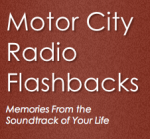 From the MCRFB news archives: 1965
From the MCRFB news archives: 1965
COCA-COLA UNCORKS RADIO AD DRIVE APPEALING TO TEENS; USE RECORD ARTISTS AS SHOWCASE FOR COKE
NEW YORK — The Coca-Cola Company is launching the biggest radio spot campaign in it’s history, featuring top-selling recording artists in an all-out drive to attract the teen market. Each attraction will be spotlighted in a different version of the sponsor’s jingle, “Things Go Better With Coke.”
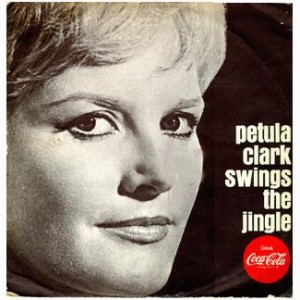 Coke, seventh largest radio-ad spot buyer for it’s products in 1964, will pole vault into the No. 1 radio position this year as a result of the teenage splurge. McCann-Erickson, Coca Cola’s ad agency who created the teenage appeal campaign, is placing the singing commercials in saturation proportions on the nation’s leading “Top 40 format” stations. The Coke ad campaign, which will soon blanket the country, is being spread over 62 key market areas, using several hundred radio stations in covering the new ad’s outreach to maximizing sales potential.
Coke, seventh largest radio-ad spot buyer for it’s products in 1964, will pole vault into the No. 1 radio position this year as a result of the teenage splurge. McCann-Erickson, Coca Cola’s ad agency who created the teenage appeal campaign, is placing the singing commercials in saturation proportions on the nation’s leading “Top 40 format” stations. The Coke ad campaign, which will soon blanket the country, is being spread over 62 key market areas, using several hundred radio stations in covering the new ad’s outreach to maximizing sales potential.
While neither the sponsor nor it’s agency was willing to divulge the extent of Coke’s investment in this drive, but informed sources placed the teen-artist radio campaign estimated at nearly the $10,000,000 level.
Artists signed by McCann-Erickson for promoting the Coca-Cola beverage include Petula Clark, The Drifters, The Four Seasons, Freddie & The Dreamers, Wayne Fontana & The Mindbenders, Jan & Dean, Freddie Cannon, Tom Jones, Roy Orbison, Lesley Gore, The Supremes, and Gary Lewis & The Playboys, The Vogues, just to name a few. Coca-Cola confirmed of their plans to sign other artists as the campaign moves forward into the immediate future.
*From the MCRFB Commercials archive, featuring (Click artist name for audio):
Lesley Gore sings for Coke
Freddie Cannon sings for Coke
Petula Clark (Downtown) sings for Coke
Gary Lewis & The Playboys sings for Coke
The Drifters sings for Coke
Jan and Dean sings for Coke
Tom Jones sings for Coke
The Vogues sings for Coke
The Supremes sings for Coke
Roy Orbison sings for Coke
Freddie & The Dreamers sings for Coke
Martha & The Vandellas sings for Coke
Wayne Fontana & The Mindbenders sings for Coke
The Fortunes sings for Coke
Petula Clark sings for Coke
Lee Dorsey sings for Coke
The Four Seasons sings for Coke
The Newbeats sings for Coke
Broad Exposure
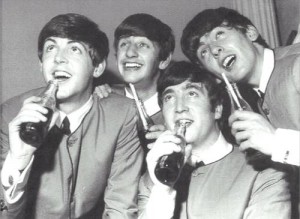
This marks the first time in the history of the record industry that its artists have been afforded air exposure on such a broad scale. At the same time, numerous artists and their managers see the new Coke drive as a means in further promoting the recording talent’s popularity and exposure.
Coke’s full-scale drive comes at the heels of a highly successful test carried on earlier this year. At the time, the “Things Go Better With Coke” jingle was recorded by the Shirelles with John Bubbles, and was placed on a handful of stations to determine the effectiveness of using teenage talent. The results were so rewarding that the company decided to expand further more of the ad’s limited trial run.
When stations reported that listeners were including the Coke ad jingle among their request — and in one case, it hit one station’s “Top 40” list — the sponsor decided to go all out.
Written by Backer
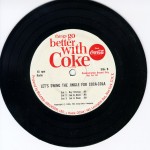
The jingle package was written by William Backer, associated creative director of McCann-Erickson’s Professional Advisory Council. This is a group of professionals comprised within the agency in various fields whose services are available to McCann’s clients for special projects. Backer is responsible for the selection of artists with top teen appeal, and will supervise production of all the jingles for the Coca-Cola Company.
Backer said he strives to retain the artist’s individuality in the recording of each version of the jingle. In that way, he said, the artist’s unique singing style and basis for her/his appeal is harnessed to capture the listener’s appeal.
This is achieved, he said, by adhering to the same conditions and procedures under which the artist’s hit recordings were made. The artist’s arrangers, favored sideman, and A&R men are used. In many instances, the jingles are recorded in the same studios — whether these be in Nashville or in the U.K. — where the respective artists’ hits were conceived, produced and were recorded. No effort or expense is spared in presenting the artist in their best possible light, Backer said.
“Two Stars” Offered
“We feel we are offering ‘two stars’ to the consumer — one is Coca Cola and the other is the performer — and we want each to be heard under the best possible conditions,” Backer said.
The purchase of radio time represents a joint effort on the part of Coca Cola and it’s franchise bottlers. Coke will provide the completed announcements with the artists for each ad take. The budget for purchasing air time in the various markets will be split between Coca Cola’s Atlanta headquarters and it’s regional bottlers around the country.
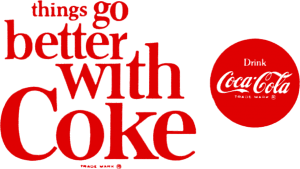
To facilitate this program at the grass-roots level, Coke has dispatched a team of representatives to work on the scene with the bottlers in purchasing time for local stations.
The harnessing of music’s appeal to capture a loyal following is not a new concept for Coca-Cola. During the 1940s, Coke was the major buyer of big bands, sponsoring weekly live band originations from the leading college campuses and service camps. The announcement that “the Coca-Cola spotlight points with pride to” — and then inserting the name of the band being featured — became a familiar radio slogan during that era.
The Kingston Trio sings Things Go Better With Coca-Cola (Full Version)
During “the golden era of the big bands,” a “Coke airshot” was a highly coveted booking, not so much revenue derived by the band leader, but for the extremely valuable promotion that resulted from the exposure. Indications are that Coke’s latest — and biggest — use of record disk talent may well equal if not surpass in importance yesteryear’s “Spotlight” series as a prime talent showcase for many of the best in today’s pop music scene in this country and England’s as well. END
(Information and news source: Billboard; July 10, 1965).
![]()